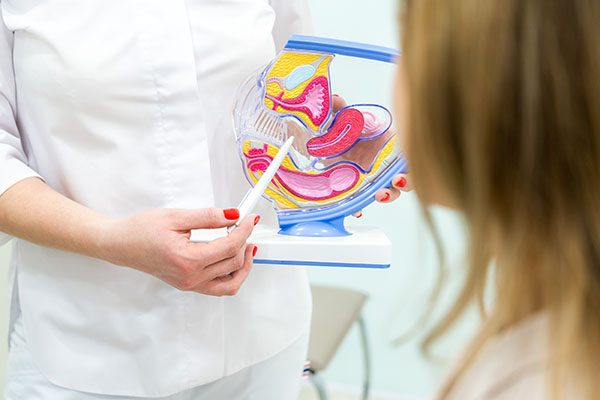Understanding the different types and causes of urinary incontinence
September 18, 2023Categories: Blog Posts
 Female urinary incontinence is the involuntary loss of urine, typically from a sneeze, a cough or during exercise. This common condition typically affects women who participate in sports or regularly workout, women who are pregnant or have recently given birth, or who suffer from urge incontinence. Natalia Susul, DPT, a Trinity Health Mid-Atlantic physical therapist who specializes in pelvic floor disorders, shared insight on how to properly manage urinary incontinence.
Female urinary incontinence is the involuntary loss of urine, typically from a sneeze, a cough or during exercise. This common condition typically affects women who participate in sports or regularly workout, women who are pregnant or have recently given birth, or who suffer from urge incontinence. Natalia Susul, DPT, a Trinity Health Mid-Atlantic physical therapist who specializes in pelvic floor disorders, shared insight on how to properly manage urinary incontinence.
Athletic females
When it comes to exercising or playing sports, areas that are commonly worked out include the core and legs. Pelvic floor muscles serve four functions: to stabilize the hips, support internal organs, play a role in sex, and a contracting role by letting things in and out. When a woman works out her inner thighs, glutes or abs, the pelvic floor muscles are also often engaged.
With continued and consistent exercise to these muscles, they “may get tight or overactive as the surrounding muscles are being worked,” Susul says. “and when those muscles are overly tense they can’t function properly.” Some types of workouts where this is often seen include heavy weight training, heavy core training, high-intensity interval training, jump rope and running. Physical therapy remains the best way to manage these conditions.
“One of the treatment methods involves lengthening the muscle, or down training the pelvic floor and then uptraining it,” Susul says. "This makes the muscle less tight to allow it to function properly.”
History of pregnancy
The pelvic floor muscles help support internal organs, and pregnancy adds extra pressure to these organs and muscles. “Months of pressure and overactivity, as well as the constant use of the pelvic floor muscles, can lead to leakage,” Susul says. Additionally, tears can cause damage to the muscles that control urination and therefore, lead to incontinence.
Prolapse, or the descent of organs onto the uterus, is another pelvic floor problem that can arises and is commonly associated with leakage. “Often, a cystocele (when the bladder drops from its usual position and pushes on the wall of the vagina) can kink the urethra and prevent that from happening,” says Susul. There is research that suggests that once an individual is pregnant and delivers, they have a fifty percent chance of developing a prolapse. However, prolapse also has a huge genetic component and even if never pregnant, a chance of developing prolapse is still possible.
“A weak pelvic floor often coincides with prolapse, which is why physical therapy is used to treat the condition and strengthen the pelvic floor muscles,” Susul says.
Urge incontinence
Urge incontinence—or a strong sensation or urgency when going to the bathroom—is a common type of leakage. This occurs because of a strong mind-bladder connection. We are taught at a very young age to go to the bathroom before leaving the house. However, this training ties the brain and mind together, and we get trained to go to the bathroom “just in case” in order to feel more comfortable.
“When people go on medications for urge incontinence and they do not help, we recommend physical therapy as the next step.” – Natalia Susul, DPT
However, continuing to do this trains our bladders to think we constantly have access to the bathroom, and any slight discomfort from our bladder holding urine (which is its job) means it’s an appropriate time to use the bathroom, when that may not be the case. Incontinence can occur when the connection and control of the bladder over the mind becomes too strong.
“The main way we treat that is behavior and bladder retraining, also known as ‘mind over bladder’, to work on controlling the urgency so one goes in a more controlling manner,” Susul explains. “When people go on medications for urge incontinence and they do not help, we recommend physical therapy as the next step.”
Learn more about pelvic floor physical therapy or to schedule an appointment with one of our experts. A physician referral is required when scheduling an appointment.
